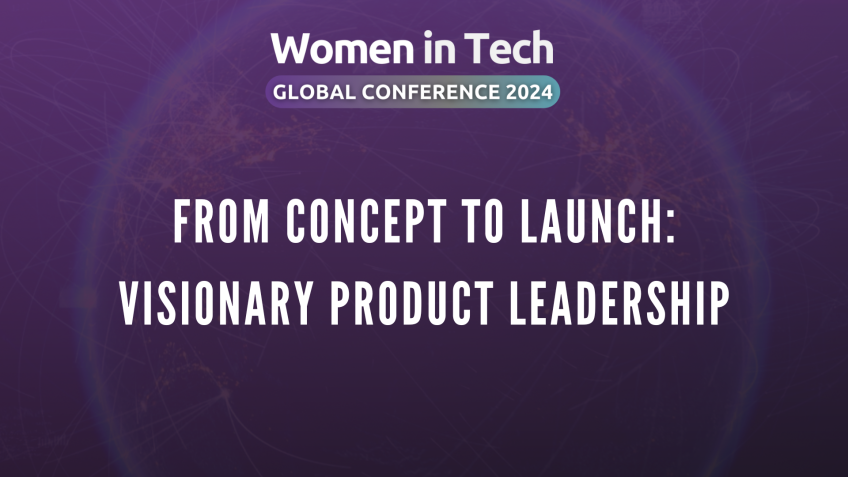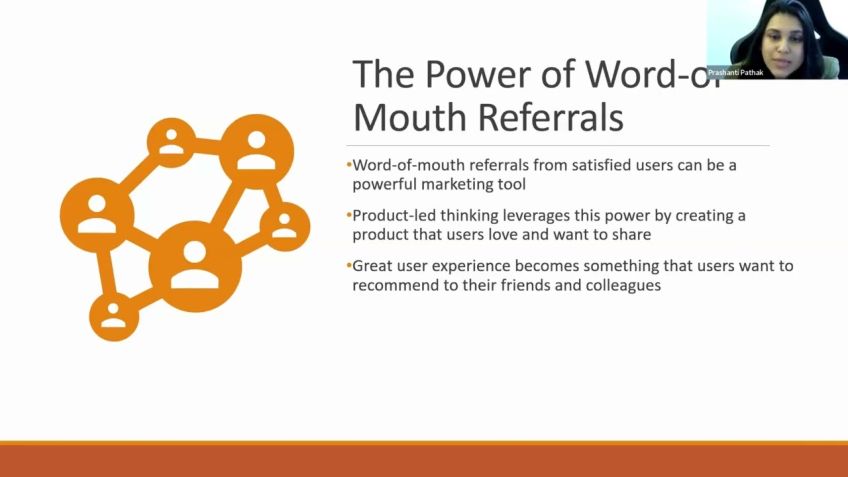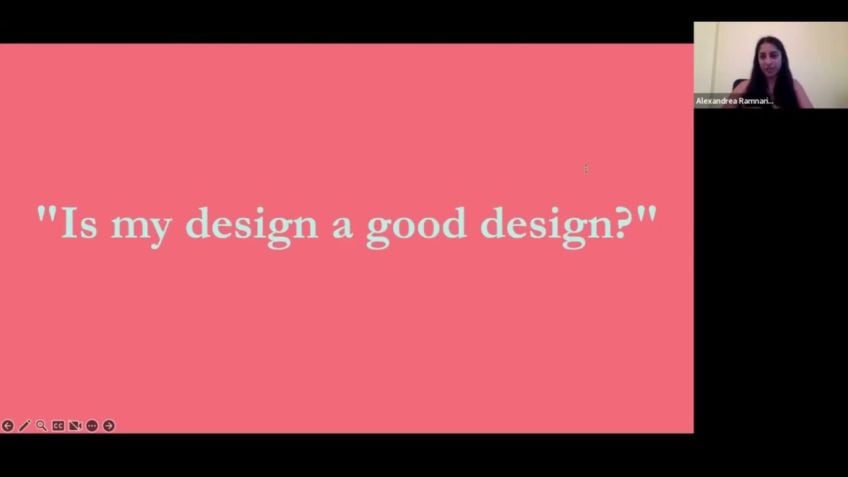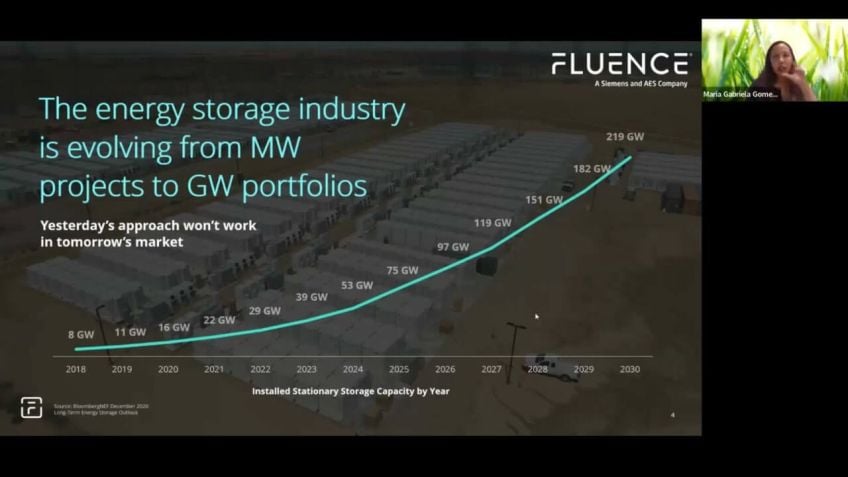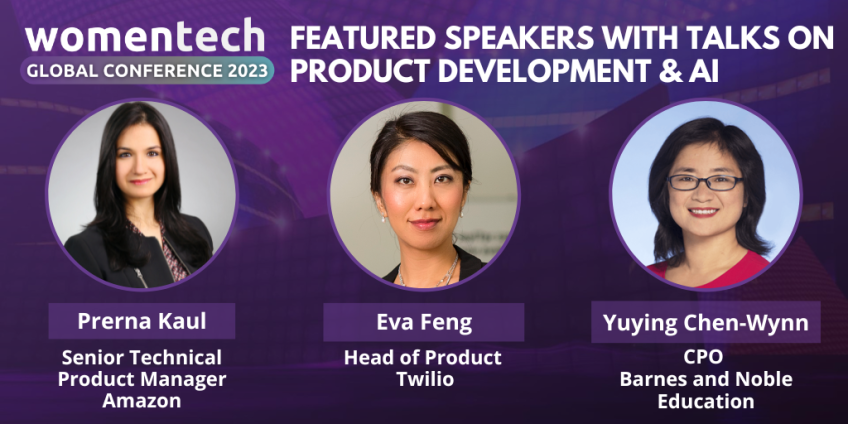Leading innovation through product-led-growth by Tatyana Mamut
A Guide to Combining Product-Led Growth and Innovation: Insights from Tatiana Mahmud
Hello readers, today I bring insights from Tatiana Mahmud, the SVP of new products at Tendo. In her presentation, she shed light on how to drive innovation by being product-led, and the role strong customer focus plays in a company's growth.
Defining Product-led Innovation with Tatiana Mahmud
Firstly, Tatiana shared about her revolutionary product, PDO Adopt, designed to enhance the digital workplace experience. She outlined her vision of truly employee-driven digital environments that boost productivity.
She emphasized how being product-led is much more than just creating new products or services. It's more about innovative thinking, being customer-centric, and redefining productivity in the workplace. Tatiana highlighted how product-led companies grow almost twice as fast as those that are not, often yielding higher gross margins over time.
This customer-obsessed, product-led approach entails focusing on delivering value and enjoyable user experiences that fuel organic growth. Companies need to provide products and services that customers not only find useful but also love using. Tendo has used this strategy to its advantage, with user testing and analytics playing a critical role in their product development process.
Redefining the Product Development Process
According to Tatiana, an effective product development process comprises three phases: discovery, definition, and development. Concentrating on the discovery phase, she noted that it should start with keen observations about customers, followed by clearly defining their needs.
- Discovery: Begin with observations about customers, identify their problems and needs, and understand what they really want from your product.
- Definition: After a comprehensive discovery phase, the details of the user experience, methodologies for tackling user challenges, and possible growth strategies should be defined.
- Development: This phase is all about bringing the design to life, ensuring it aligns with customer needs, and continually refining it based on feedback and user testing.
Product-led teams conduct research early on and consistently throughout the development process to gain insights about customer behavior, preferences, and patterns. User testing and analytical tools help quickly gather this invaluable data to guide product evolution and ensure a match with customer needs.
Unleashing the Power of Flywheels over Funnels
Tatiana discussed shifting from traditional funnels to flywheels for a more sustainable growth model. While funnels tend to lose potential customers along the way, the flywheel approach is more strategic in driving organic growth. Flywheels rely on a theoretically sound cycle, where each aspect fuels and builds on the other.
For instance, growth for Nextdoor, where Tatiana previously worked, began by increasing content to spur engagement. More content led to higher engagement, which in turn attracted revenue from ads and facilitated local connections. The formation of micro-communities then motivated more people to join and start interacting, thus regenerating the cycle.
Catalyzing Personal Growth with Product-led Innovation
Lastly, Tatiana emphasized how being product-led boosts personal career growth. She stressed on the need for product leaders to have the courage and confidence to make difficult decisions and to prioritize customer needs over competing priorities. The rise of Chief Product Officers in the corporate realm reflects this growing importance of product leadership, and underscores the need for product managers to continually hone their focus on customer needs, innovation, and product-led growth.
In concluding, Tatiana Mahmud affirmed being product-led as a viable means to grow both your business and career. She emphasized that a strong customer obsession─understanding and focusing on customer satisfaction─is key for companies to truly innovate and be successful.
Video Transcription
Hi, everyone. My name is Tatiana Mahmud. I'm the SVP of new products at Tendo. Um, I think there are about uh uh a few, little less than 10 people in the session so far.If you can hear me, please say hello in the chat so I can know that this is all working. That would be awesome. There we go. Hi, Mary Beth. Anyone else? Hi, Jenna. Awesome. Santa Rosa. I am in San Francisco right now. Um It's a beautiful day. All right, I'm just gonna wait another minute or two, just another minute probably for, to wait for everybody else to uh join a little bit about me. Um, to start off. Um, I have been working at PDO for about a year and a half leading uh a new product, uh development of a new product uh called adopt, which is to really reshape the digital workplace experience. As we all know, we are now fully digital. I mean, look at us like we're at a conference all kind of like through a digital app, right, through a browser based app. Um This is how we work today. And so the product that we've been building at PDO that, you know, I was hired to build and bring a team on to build as well.
Um is called PDO Adopt, which really helps us all understand where we're working um is are the software and the tools effective for how we are working. Um And really helps to shape and reshape uh our digital workplace environments and experiences so that they are truly employee led, employee driven and making sure that those work flows are really productive um in, in the ways that we're working for. Those of you who don't know PDO, it's uh it's also um the other uh product, the other main product that we have engage as great as a great product analytics platform, uh which helps you understand, sort of how your users are using your product and gives you great analytics and allows you to write in app messages and tools, tool tips, things like that um without having to engage any um any developers before that I was CPO of next door.
Hopefully you all are on next door. Um And before that lead and I led next door through a huge transformation. Um uh And uh really through the 2020 craziness around, you know, first COVID, then Black Guys matter and then the elections. So it was, it was quite a whirlwind. Um But really proud of, you know, what we were able to accomplish, launching groups, launching the help map, uh launching a new ads platform, local business platform. Um And then uh as the company was getting ready to IP O, I decided this probably wasn't my long term career in social media and decided to move on and, and join PDO. And before that I was at Aws building honeycode. And um before that at salesforce, leading the lightning experience redesign and IOT cloud. And prior to that, I uh spent many years at do leading innovation projects around the world um including writing the Human Centered design tool kit um and using Human Centered design to create great products and services uh really around the world um globally in, you know, on six different continents um is where that work took me.
So have a lot of experience driving innovation. And what I wanted to talk to you about today is how you can drive innovation through product led growth. And here I'm gonna be talking very broadly about innovation. Um And really thinking about what it means to be product led.
Um When you're talking about uh developing new products, new services and you know, creating new things in the world. So the first thing that we, I think hopefully all know or have heard about before is that product led companies innovate and grow faster. Um So product led companies, what does that really mean? And what are some of the data there? Um So some of the data there is that product like companies grow at about 1.8 X times the the growth rate. So about two times faster than non product led companies. And if you think about non product led companies, what are some of the things that you see there, some of those things you might see are like sales led companies, marketing led companies, right? Companies that really focus more on the business model or the sales motion, right?
As opposed to really innovating on product, product, like companies also earn about two times the enterprise value. Um they get AAA 1.5 five times the revenue multiple and they have higher gross margins over time. Obviously, it usually does take some investment initially um to really get your product to be amazing and to grow on its own and be so lovable. Um that uh that it starts to kind of feed upon itself and have has product doing the work of growth. But over time, there is greater and greater gross margin. So one of the things that, you know, Amazon's founder, Jeff Bezos said, and I heard him say this many times when I worked at Amazon is that product led companies. The fundamental piece of that is to be customer obsessed, right? If you're thinking about what does it really mean to be product led, it means that we are building a product through the eyes of our customers and through really understanding and having a an obsession with their experience so much so that we are in the short term, maybe uh making decisions to de prioritize obsessions about technology or com competitors or business model.
So being product led means that we are driving innovation through a customer obsessed le uh customer obsessed L lens, meaning in Jeff bezos' terms, we need to be customer obsessed instead of technology obsessed competitor, obsessed or business model obsessed. So in particular, let me like double click on this competitor obsession, right? The way the product like companies innovate is not by saying this is what our competitors are doing. Let's do the same thing, right? They innovate by saying what are the aspects of the product? What are the jobs to be done that we are trying to deliver to our customers? Right? That will really drive value and inherent growth through a product motion. What will make our customers love our product so much that they will use it more and recommend it to others and share it with others as well, right? So it's that customer obsession that is the foundation of being product led. So let's see a little bit more about what Jeff Bezos says about customer obsession and innovation. Good inventors and designers deeply understand their customer. They spend, they spend tremendous energy developing that intuition, they study and understand many anecdotes rather than only the averages, you'll find on surveys.
They live with the design and I'm not against beta testing or surveys, but you the product or service owner must understand the customer have a vision and love the offering. Then beta testing and research and process can help you find your blo blind spots. But a remarkable customer experience starts with heart intuition, curiosity, play guts and taste. You won't find any of it in a survey, right? So what does that mean? It means that deep understanding of the customer is the thing that is driving the product experience and that love, right?
That the customer feels for the product that love that you feel for your customer, which is it baked into the product experience? That is the thing that drives the growth that drives the organic growth through the product itself. So one of the ways that, you know, we can bring this out as product leaders in our own companies and in our on our own teams is to really have a product development process that starts with a focus on the customer. So I like, you know, very generally a product development process that looks something like this. There are three phases for product development. There's a third one which is delivery, which I sometimes talk about as well. But discovery definition and development. And many of us in the product world, we focus on this development side um of product development. Um And but we often forget to spend enough time in the discovery phase and in the discovery phase, what does it mean to be product led? It means that we start with observations of about our customers, of our customers. And then we really take the time to create and define what are their key jobs to be done? What are the jobs that they are trying to accomplish in their lives or at work that our product could do better than any other product? Right?
And how do we lead innovation through the product experience from the perspective of the core jobs to be done that our customer is trying to accomplish. And from there we go into a charrette which is a really a brain storming activity, but it's a brainstorming activity that starts with the jobs to be done and gets really concrete and tangible with multiple solutions before we go into experimentation and selection, right? We can go like I I think going through this discovery phase and really taking the time to understand, right, where our customers coming from, what do they need before we define any of the UX designs or any of the experiments we want to run, right? Is really critical to driving innovation with a product and customer lens. Now I took, I said taking the time, but this can be done really quickly at next door. We did this whole discovery phase in a weekend when, when COVID hit and things started closing down, right? We actually had this discovery phase happened over a weekend um because we wanted to know what were people doing? What did people need in this critical and very, very important moment in history and how could we bring different neighborhoods together? What were people needing?
Well, one of the things people were needing is they were trying to figure out how to get help if they were homebound. And others who were not homebound, were trying to figure out who are the people in my neighborhood who need help, right? And that's how the whole inception of how map and help groups happened. And those innovations drove massive three X growth on the platform, right? Because we just took that weekend to really understand what was happening to um to our members on the ground, to neighbors on the ground during that pivotal transition moment around COVID, right? And then we were able to define the experiences that led and unlocked massive growth. OK?
So how do you do this? Like some of us say like, oh it's time consuming or we're all working digitally now? Well, you do need to have some way to do research, right? And do research early and often is what I would say, right? Talk to customers early and often to be product led and to unlock this growth, which means that you start research in the beginning um of thinking about a new product, you do it in the middle to figure out which concepts are good and then you do it at the end to basically validate what you're doing and, and user testing is a great platform to do that in.
Uh my teams have always used user testing um as a way to do that quickly. That story that I just told you about it next door, right? That was all done over a weekend. All of us were at home, right? We use this platform to get the feedback very, very quickly. And then you also want to make sure you have great analytics in place. You wanna track um you know, adoption, retention, virality and basically product love. How is it that, you know, your first experiment when you go into that experiments phase, how is that going? Is it actually driving the growth that you wanted and that you expected? And how do you pivot quickly? Um you need a, you know, really great metrics and analytics to know how to do that. OK. So the second thing that I wanted to talk about is a little bit more personal. So I've just talked about how being product led on your team within your systems, within the product development process, right? Can help you unlock growth, but how does it help us personally? Right. So one of the things we know is that, you know, a lot of people have ideas about what our product should be. We're often barraged with lots of feedback, lots of opinions, lots of directions, right?
As product leaders, there's never a dearth of ideas around what we should be doing, right? The question is the prioritization right? And making sure that the ideas we prioritize give us the biggest bang for the book Buck today, right? So one of the things that I would, that I would um posit is that great product leaders. And I, we've heard this a lot, great product leaders know when to push back, right? And we know when to say that's a great opinion. Thank you for that piece of feedback. This is how we're prioritizing, that is often very, very hard to do. So, one of the things that I work with product leaders on is developing the courage to truly innovate, right? And I do think that this customer obsessed way of being product led can give all of us the courage to not just go after a shiny object or what the competitor is doing or what the highest paid person's opinion is about what we should be doing. But to really step back and say, OK, where is it that we need to go and how am I going to develop my skills and my perspective, to have the courage and the confidence to know that where I'm going is the right way. And we see this uh really paying back in dividends in our careers because the whole reason why so many companies today um are ha have a chief product officer and more and more are hiring chief product officers is because they really value and and investors see the value of having a strong opinion that is customer led, that is customer driven on the product side in the C suite, right?
And so the rise of the chief product officer is evidence of the fact that being product led and having the courage to push back on opinions or what competitors are doing is a critical aspect to rising in our careers as product leaders. It also gives us the courage to say we're product managers, not project managers, right? And making sure that people understand that product management is around setting the vision and setting the goals for a product and setting uh the prior priorities for how things are going to be done, not just delivery dates for when you know, new features will be shipped. And honestly, I don't believe that product, product managers should be, you know, assessed on how many features they ship or whether they ship on time, right? How product managers should be assessed is what is the value that we are building for customers? And how does that value that we build for customers translate into value for the company? Right? So it's not about project management is around really having that customer obsessed product led perspective that then drives growth, right? And that's what product management is really about.
So and next door, another story here from next door. Um you know, we really took this approach to um to having the courage to do a lot of different things that were pretty risky, right. Pretty risky. But based on a really customer obsessed perspective. So, you know, we experimented with news near you. We heard again and again and again from neighbors, um that they really missed having their local newspapers. So how can we put that in there? Right. They wanted to understand what were their neighbors thinking? How did people in their community think about something? And then they also wanted to hear from local businesses. So it no other platform in the world had done this, right? It wasn't about looking at the success of other platforms, right? It was about listening very deeply to our neighbors to our particular customers and understanding what are their needs, where are those needs going and how do we develop the experience, their experiences that are truly innovative, which means that they are new to the world, right?
And developing those and seeing tracking whether these actually lead to growth on the platform. And when you're looking at growth on the platform, you wanna go from a mind, uh you wanna go from a mindset of thinking about funnels to a mindset of thinking about flywheels. And what does this mean? Well, that means that uh you have to have a theory of growth about how all of these different experiences feed into 11 another to actually start to build a flywheel so that you don't have to have constant marketing dollars coming into the funnel, right? And conversions coming out of the funnel, right? That's what the funnel you know, really looks like, right? You lose people along the way whereas the flywheel builds upon itself. So our theory of growth um at next door, uh was first we grow content because more content means just more things for people to consume. More interesting times for people to come back, more content should grow engagement, right? Grow engagement drives revenue through ads, but also engagement uh opens up the door for growing local connection, right? Because the more people who are talking about more content means that you might connect with someone that you agree with, right?
You might see posts from them, you might see comments from them, you start to build little micro communities, right? And that is one of the reasons why we started building groups as well, right? Those micro communities then mean that you might want to bring more people that you know, who aren't currently on the platform into those micro communities, right? So you know, say you have a dog lovers group and you know that the neighbor next door also has a cute dog, but they're not on the platform, you might invite them, right? And then as more people come onto the platform, content grows again because more people means more opportunities for people to post, to comment and do all those things. So the flywheel builds on itself and that's a really important way of thinking about product led growth. And again, having the courage to prioritize these experiences, as opposed to other experiences. At the time, there were all kinds of ideas and all kinds of, you know, um uh feedback about what kind of features and what kind of product experiences we can build on the next door platform because really the opportunities are endless, right?
We can build things for real estate agents and we can build things for house hunting and we can build things for, you know, dog daycare and things like that, right, or dog walking um services. But what did we actually think about in our theory of growth? And why did we prioritize these experiences because they all fit together from a customer uh centered customer obsessed perspective to grow the platform on its own through product. So these are a couple of snapshots about uh the next door product um in 2019 and then in 2020 huge changes obviously visually as well to just make the platform more beautiful, more engaging, larger pictures have the neighborhood come to life. And you know, we also in, in terms of saying, we're going to commit to this theory of growth and to investing in changing the product and changing it in this way, we showed a commitment to product led growth by saying we're gonna turn off, you know, paid marketing in early 2020 see what happens, see if the product actually can do the work and it did we actually grew, um uh grew new members um and grew engagement on the platform by, you know, three X in 2020.
Even as we turned off paid marketing, we also had some secular trends that helped us out there as well. But certainly people came into the platform in order to see a post about, you know, uh you know, where uh from their local health department COVID, for example. But what we saw was that they were sticker and they stayed on the platform much more because they were starting to actually engage with these new features and having the courage to actually prioritize the right features came from a truly product led customer obsessed perspective.
So if I can leave you with just one thing that is that customer obsession and you know, a real focus on making your product work being product led on behalf of your customers, right? Not competitor led, not business model led, not technology led, but product led with your customers at the center is the way to grow both your business and your career. OK. Thank you. And um I think we have some time for questions. If someone has some, any questions at all. OK. Well, thank you all very much. I think that that is the time that I had for this talk. It was a 20 minute talk. I hope you enjoyed it. Please do connect with me on linkedin. Um If you do love Pender or want to know more about why some of the folks here, some of the product managers love PDO. Just reach out to me on linkedin or send me an email. We're happy to, I'm happy to talk to you about that as well. Um And um again, let's keep building great products for our customers. Let's focus on them and let's, you know, grow the world in the right way and make technology work for us as opposed to the other way around. Thank you very much.

